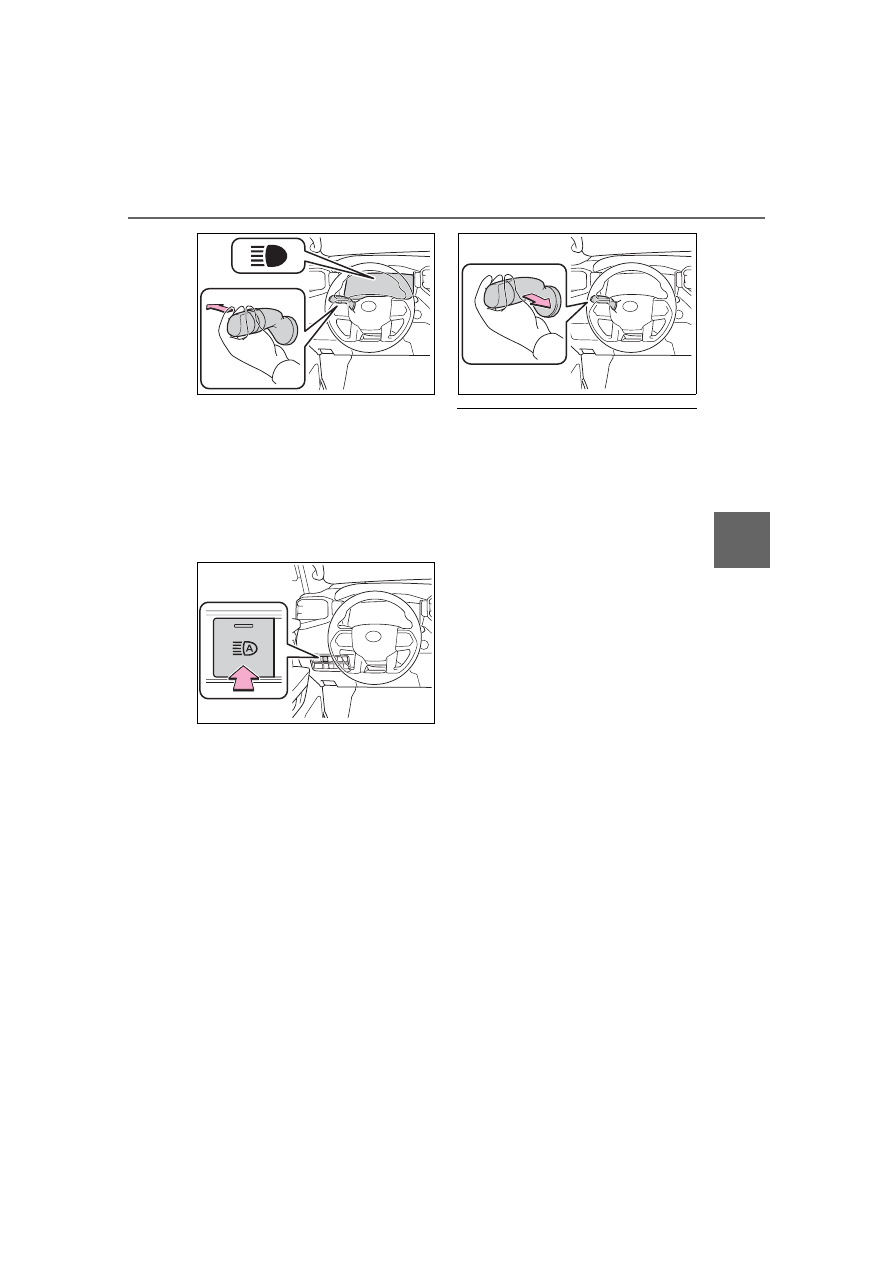Toyota Tundra (2023 year). Manual in english - page 14

223
4-3. Operating the lights and wipers
4
Dr
iv
ing
■
Switching to the low beams
Press the Automatic High Beam
switch.
The AHB indicator will turn off.
Press the switch to activate the
Automatic High Beam system
again.
■
Temporarily switching to
the low beams
Pull the lever toward you and
then return it to its original posi-
tion.
The high beams are on while
the lever is pulled toward you.
However, after the lever is
returned to its original position,
the low beams remain on for a
certain period of time. After-
wards, the Automatic High
Beam system will be activated
again.
■
Temporarily switching to the
low beams
It is recommended to switch to the
low beams when the high beam
may cause problems or distress to
other drivers or pedestrians nearby.